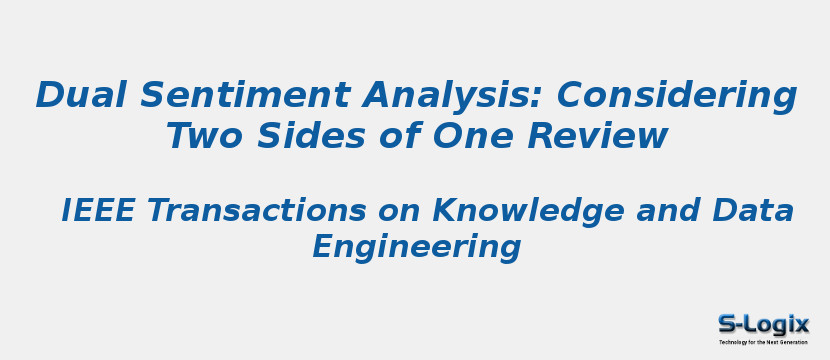Research Area: Data Mining
Bag-of-words (BOW) is now the most popular way to model text in statistical machine learning approaches in sentiment analysis. However, the performance of BOW sometimes remains limited due to some fundamental deficiencies in handling the polarity shift problem. We propose a model called dual sentiment analysis (DSA), to address this problem for sentiment classification. We first propose a novel data expansion technique by creating a sentiment-reversed review for each training and test review. On this basis, we propose a dual training algorithm to make use of original and reversed training reviews in pairs for learning a sentiment classifier, and a dual prediction algorithm to classify the test reviews by considering two sides of one review. We also extend the DSA framework from polarity (positive-negative) classification to 3-class (positive-negative-neutral) classification, by taking the neutral reviews into consideration. Finally, we develop a corpus-based method to construct a pseudo-antonym dictionary, which removes DSAs dependency on an external antonym dictionary for review reversion. We conduct a wide range of experiments including two tasks, nine datasets, two antonym dictionaries, three classification algorithms, and two types of features. The results demonstrate the effectiveness of DSA in supervised sentiment classification.
Keywords:
Author(s) Name: Rui Xia,Feng Xu,Chengqing Zong,Qianmu Li,Yong Qi and Tao Li,
Journal name: IEEE Transactions on Knowledge and Data Engineering
Conferrence name:
Publisher name: IEEE
DOI: 10.1109/TKDE.2015.2407371
Volume Information: Aug. 2015, pp. 2120-2133, vol. 27
